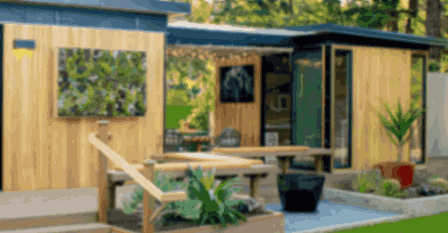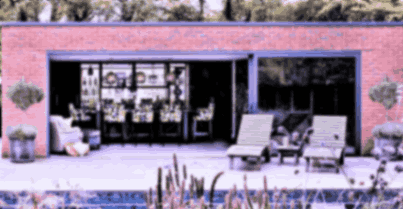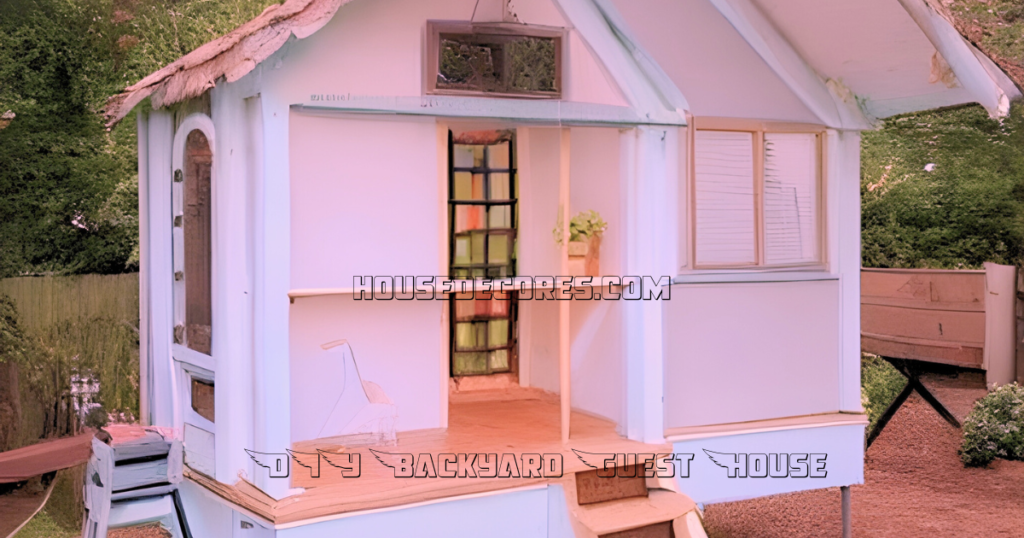Introduction:
Contents
A DIY backyard guest house is a great way to create a backyard that gives homeowners a unique and versatile space that fits their unique background and needs. This process involves planning, designing, and constructing the project at each step. From choosing a specific space on the ship to the right choice of materials, DIY Travel guides people on how to create a guest house together. Whether it’s for guests or as a multipurpose workspace, DIY backyard guesthouses help owners create their own unique space. Even the DIY project feels life-friendly, helping homeowners increase the real and tangible value of their country.
Understanding DIY backyard guest house kits
A DIY backyard guest house is an enjoyable and rewarding project. However, there are some important things to remember. Check local zoning regulations and obtain any permits needed to ensure that it is legal. Plan carefully your design, taking into account the size, layout, and materials that you will need. Stick to your budget and keep track of all expenses. Consider utilities such as electricity, plumbing, and insulation to create a comfortable space. Be prepared to invest time and energy in construction or hire help if necessary. You can create an inviting, cozy space that guests will enjoy with careful planning.
Backyard guest house with bathroom
Backyard Guest House with Bathroom offers luxury and convenience. It is a self-contained living space that includes a private bathroom. This feature provides autonomy and essential amenities to guests without having them enter the main house. Ideal for long-term visitors, this feature reflects an attentive approach to hospitality. Your property will become a welcoming retreat.

DIY guest house kit
Building your backyard is easy with the Guest House Kit. These kits are suitable for beginners as well as DIY enthusiasts. They include pre-cut materials and detailed instructions. They are important because they simplify construction by requiring minimal skills.
You can build the space you desire without traditional construction hassles by following the step-by-step directions. These kits are focused on personalization and structure, whether they are a single unit with or without additional features like bathrooms and kitchens.
Backyard guest house with bathroom and kitchen
A backyard guest house with a bathroom and kitchen adds essential guest amenities to a self-contained living space. The setting offers visitors a private retreat, with personal bathroom facilities and a kitchen for preparing meals. In addition to short-term stays, it caters to extended stays, adding versatility to your property. This type of guest house enhances the guest experience and adds value to the property, serving multiple functions, from a rental unit to a private workspace.

DIY backyard guest house with bathroom
A DIY guest house in the backyard with a bathroom is a great way to combine comfort and practicality, giving guests their own living space. These additions are convenient and functional, allowing guests the ability to use essential amenities without having to rely on the main home. Planning is key and includes a careful consideration of the layout for electrical and plumbing work. Choose waterproof materials and ensure compliance with local codes to create a self-sustaining, personalized retreat. This will add significant value to your property and enhance the guest experience.
How to build a guest house cheap?
Step 1: Planning and design
Start by imagining the purpose of your new guest house. Do you want a standalone, simple structure or do you also want a kitchen and bathroom? Consider the space available, the local building codes, and your budget. Consult an architect or use design tools to create a plan that matches your vision.
Step 2: Selecting the right kit
Choose a kit that best suits your needs. Kits with high-quality materials, detailed instructions, and clear directions are the best. Make sure the kit matches the design that you have planned and allows for customization.
Step 3: Preparing the site
Clear the designated area in your backyard for the guest house. Level the ground, remove any debris, and mark the boundaries. This step sets the foundation for a stable and well-positioned structure.
Step 4: Foundation and framing
Follow the instructions provided in your kit or consult with a professional to lay the foundation. Once the foundation is set, proceed with the framing. This step forms the skeleton of your guest house, so accuracy is crucial.
Step 5: Installing utilities
For a guest house with a bathroom and kitchen, plan the installation of plumbing and electrical systems. If you’re not experienced in these areas, consider hiring professionals to ensure safety and compliance with building codes.
Step 6: Exterior and interior finishing
Apply the siding, roofing, and other exterior finishes according to your chosen design. Internally, focus on insulation, drywall, and flooring. This is where the customization aspect shines, allowing you to create a welcoming and aesthetically pleasing space.
Step 7: Adding bathroom and kitchen fixtures
For guest houses with bathroom and kitchen facilities, install fixtures such as sinks, toilets, and kitchen appliances. Make sure all installations comply with local regulations and safety standards.
Step 8: Personalizing the space
Now comes the fun part—personalizing your guest house. Furnish the space with comfortable furniture, add decorative elements, and consider the overall ambiance you want to create. This step transforms the structure into a homey retreat for your guests.
Benefits
- Increased property value: A well-designed and functional guest house can significantly enhance your property’s value.
- Versatility: The versatility of a guest house allows you to use it for various purposes, from accommodating guests to serving as a home office or studio.
- Cost-effective: DIY projects, especially those using kits, can be more cost-effective than hiring professionals for a custom build.
Conclusion:
A DIY backyard guesthouse, complete with a bathroom and kitchen, can seamlessly combine functionality and serenity. This addition offers guests a space that is independent and equipped with the essentials, but it also enhances comfort and engagement. For success, it is important to plan the project carefully, including electrical and plumbing considerations. Selecting waterproof materials and adhering to local codes will allow homeowners to create a self-sufficient, personalized retreat that enhances the guest experience and increases property value. DIY empowers homeowners to customize their space. It strikes a balance between practicality, creativity, and independence and fosters a feeling of satisfaction and empowerment in transforming their property.

